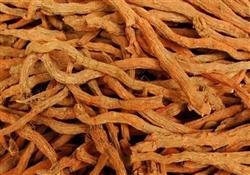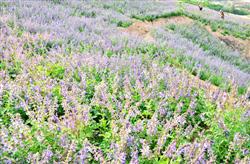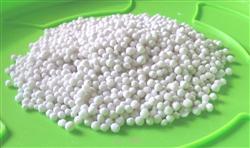How to cultivate and process Salvia miltiorrhiza?

How to cultivate and process Salvia miltiorrhiza? Please introduce Salvia miltiorrhiza, also known as Radix Salviae Miltiorrhizae, which is the dried root of Radix Salviae Miltiorrhizae. It has the functions of dispelling blood stasis and relieving pain, promoting blood circulation and regulating menstruation, nourishing the heart and removing annoyance. It is suitable for irregular menstruation, amenorrhea, ectopic pregnancy, hepatosplenomegaly, angina pectoris, restlessness, ulcers and other symptoms. It is a commonly used Chinese herbal medicine with an annual demand of about 4.1 million kg. The product is mainly produced in Anhui, Shanxi, Hebei, Sichuan, Jiangsu, Liaoning, Henan, Shaanxi, Shandong, Zhejiang and Fujian provinces. Its cultivation and processing methods are as follows: first, Salvia miltiorrhiza is a deep-rooted plant, and the root can go deep into the soil layer of more than 0.3 meters. In order to facilitate the growth and development of roots, it is appropriate to choose fertile, loose and deep land with slightly higher terrain and good drainage. Sunny low slopes are suitable for cultivation in mountainous areas. Salvia miltiorrhiza is not strict on soil, yellow sand soil, black sand soil, alluvial soil can be planted. Salvia miltiorrhiza is a root medicinal material with a long growing period. when preparing the soil, we should first apply basic fertilizer on the ground and apply more late-acting farm manure and phosphate fertilizer as base fertilizer as possible. It is best to apply 2500 to 4000 kilograms of rotten manure per mu and turn it into the soil as base fertilizer. Before planting, rake, crush the soil, level off, and make beds. In general, the width of the ditch is 2.5 to 3 meters, and the height of the border is 15 to 25 centimeters. For cultivation in plain areas with high groundwater level, in order to prevent rotting roots, deeper furrows need to be dug; for long beds, waist trenches should be dug every 20 meters to maintain smooth drainage. Second, propagation methods: seed propagation is generally used for sowing, and it is best to sow seeds from Grain in Beard to the Summer Solstice and the End of Heat to White Dew in the year of seed collection. The nursery bed should choose the land with slightly higher topography, loose and fertile soil and convenient watering. To raise seedlings in mountain areas, it is best to choose slopes facing east or southeast as seedbeds to reduce sunlight and facilitate seedling emergence. The seedbed was ploughed first, and the retting human feces and urine was used as the base fertilizer. The soil should be fine and make a high border, 1.3 to 1.66 meters wide. Then sow the seeds evenly and shallowly on the border surface, tread lightly with your feet after sowing, make the seeds close to the topsoil (no need to cover the soil), cover with a thin layer of wheat stalk, and often sprinkle water to keep moist. When the seedling has 3-5 true leaves, if it is found that it is too dense, the seedlings should be interspersed. The seedlings can be planted and cultivated separately. During this period, attention should be paid to watering, and rarefied human feces and urine should be applied twice in time to promote the growth of seedlings. The suitable transplanting time is from late October to early November of that year. Before transplanting, the holes were opened with a distance of 25 cm × 25 cm on the surface of the border, which depended on the length of the root of the seedling. Plant 1-2 plants per hole, planting depth to slightly exposed heart buds, not too deep, and do not expose the roots. After planting, cover the soil to the flat point, compact slightly, and water the root in time. Salvia miltiorrhiza transplant early, take root early, already survive when the cold winter comes, turn green early next year, try not to postpone the transplant until the cold season as far as possible. Root propagation: from the Beginning of Spring to startled stings. A new root with a diameter of about 1 cm is selected for planting. Before planting, cut the root into 5-7 cm long root segments. The planting density is 27 cm between rows and 20 cm between plants. Open a groove on the border surface, put the root section directly in the ditch, pay attention to the upper and lower ends are not inverted, and cover the soil after planting. Seedlings usually emerge after Grain Rain. Split root propagation, flowering later, it is difficult to receive seeds, but the root growth is faster. Split-plant propagation: from the beginning of winter to the second year, when the salvia miltiorrhiza was harvested at home (usually between the Winter Solstice and the Beginning of Spring), the sturdy and disease-free plants were selected, the thick roots were cut off for medicinal use, and the roots with heart leaves thinner than cigarettes were used as seedlings for planting. Wild Salvia miltiorrhiza can also be dug and transplanted with roots and seedlings. Large seedlings can be divided into 2-4 plants according to the natural growth of buds and roots, and then planted. Cutting method: before and after the Qingming Festival, select a sturdy stem, cut it into 2 or 3 segments, cut off some leaves, cut them into the whole border, and bury them into the ground 6-10 cm, so that the buds are slightly exposed to the soil, compacted with the soil, and watered immediately. After that, spray water with a sprayer in the morning and evening to keep the border moist. Third, fertilization in field management: after Salvia miltiorrhiza turns green in spring, it will be harvested only after 9 months of growth. It needs to be fertilized several times in the process of growth. For the first time, the seedling fertilizer was applied when turning green, with 750 kg of 800 kg flushing water per mu of rotted human feces, and the second from mid-April to late May. In the plot without seeds, 1000 kg of feces and urine and 50 kg of cake fertilizer per mu can be applied after cutting the inflorescence, and the long root fertilizer should be re-applied after cutting the old pole for the third time in June and July. 1500 kg of concentrated fecal urine, 20 kg of superphosphate and 10 kg of potassium chloride were applied per mu. It is better to apply ditch or hole application for the second and third times, and then cover the soil without fertilizer. Loosening soil and weeding: Salvia miltiorrhiza grows slowly in the early stage, so it should be loosened and weeded in time, generally loosening soil and weeding 2 or 3 times before transplanting. Loose soil should be shallow rather than deep to prevent damage to the roots. Do a good job of drainage and irrigation: during the whole growth period of Salvia miltiorrhiza plant, we should pay attention to clear the gully, keep the drainage smooth, and prevent Salvia miltiorrhiza from being waterlogged in rainy season. Ditching can be combined with fertilization to cover the ditch mud on the fertilizer. In summer days and in case of continuous autumn drought, ditch irrigation or watering can be carried out to fight drought. Furrow irrigation should be carried out in the morning and evening, and should be irrigated and drained quickly. Removing inflorescences: salvia miltiorrhiza, which is not ready to collect seeds, should be pinched off one after another from mid-April to ensure that nutrients are concentrated on the roots. Inflorescences should be picked early and frequently, preferably picked or cut every 10 days, several times in a row. Cutting off the old stem: after cutting the seeds, the stems and leaves of Salvia miltiorrhiza grow old or wither gradually, which is disadvantageous to the growth of the root. Cutting it off can make the stem and leaf cluster grow again and promote the root to continue to grow. Therefore, it is appropriate to cut off all the stems from the Summer Solstice to Lesser Heat. 4. control of root rot by diseases and insect pests: it occurred from May to November, and the damage was serious from June to July. At first, individual root strips or underground stems in the root system are damaged, and then spread to the whole lower part. The damaged part was wet and rotten, and the skin turned black; at the beginning of the aboveground, individual stem branches withered first, and in severe cases, the whole plant died. Control methods: the implementation of flood-drought rotation or root irrigation with 200-fold dilution of biological pesticide anti-120, or spraying with 50% topiramate 800-fold dilution, all have good results. Sclerotinia sclerotiorum disease began in early May, especially from June to July. The pathogen first invaded the base of the stem, the head of the bud and the rhizome, making these parts gradually rot and turn brown; gray-black mouse fecal sclerotia and white mycelia often occurred on the surface of the diseased part, the nearby soil surface and the interior of the base of the stem. At the same time, the upper stem and leaves of the diseased plant gradually yellowed, and finally the plant died. Prevention and treatment: Jinggangmycin and carbendazim mixture can be sprayed at the initial stage of the disease, or 1000 times dilution of 50% lixivium can be sprayed or poured. Leaf spot: is a bacterial leaf disease. It begins at the beginning of May and can last until the end of autumn. The disease spot on the leaf of the diseased plant is dark brown, 1-8 mm in diameter, nearly round or irregular in shape. when the disease spot is severe, the disease spot is dense and confluent, and the leaf dies. Prevention and control methods: ① pay attention to trench drainage to reduce field humidity; ② peel off the old leaves of the stem to facilitate ventilation and reduce the source of the disease; ⑧ sprayed 150 Bordeaux liquid before and after the disease. Small land tiger: spring harms seedlings. 100 grams of 90% trichlorfon mixed with 5 kilograms of fried tea seed cake can be used as poison bait and sprinkled into the field. The damage of Spodoptera litura was serious from May to October, especially from May to June. The insect bites the leaves of Salvia miltiorrhiza into holes or holes, and in serious cases, the leaves are eaten up, which is the main pest of Salvia miltiorrhiza. It can be sprayed with 1000 diluted liquid of 90% crystal trichlorfon, or 250 times diluted of 25% 223 emulsion, or 300 times of 350 times diluted with 25% insecticidal amidine. Lamp moth: it occurs in late September, and the larvae feed on the leaves of Salvia miltiorrhiza. Can be sprayed with 1000 times dilution of 90% crystal trichlorfon. Fifth, the remaining species of Salvia miltiorrhiza blossoms and bears fruit every year, and in the second year after planting, the seeds begin to mature one after another at the end of May or June. In inflorescence, the order of flowering and seed setting is from the bottom up, and the seeds below mature first. The seeds should be harvested in time, otherwise they will be scattered on the ground naturally. when harvesting, if the seed area is very small, it can be harvested in stages and batches, that is, the calyx in the lower part of the inflorescence together with the mature seeds in the field, while the upper immature segments will be harvested later. If the remaining area is large, when 2/3 of the calyx on the inflorescence has faded to yellow but not completely dried up, cut off the whole inflorescence, then discard the young part of the tip and retain the mature seeds in the middle and lower parts. After the inflorescence is cut off, the inflorescence needs to be exposed to the sun immediately, beat out the seeds and cleanse. After drying the seeds in three sunny days, the germination rate was higher and the seedlings emerged neatly after sowing. After drying the seeds, put them in a cloth bag and hang them in a cool, dry room for preservation. Harvest and processing Salvia miltiorrhiza can be harvested after one year of planting in the field. It is the most suitable harvest time from the end of the year to the end of the year when the stems and leaves withered by frost to turn green in the early spring of the following year. It can be harvested from the Beginning of Winter to the Beginning of Spring. And it is better to harvest from the Winter Solstice to Lesser Cold. If the root is harvested prematurely, the root is not full and has more moisture, and the drying rate is low; if it is too late, it will sprout and turn green, consume nutrients and poor quality. When harvesting Salvia miltiorrhiza, it is appropriate to choose sunny days. The root strip is deep in the soil, brittle and easy to break, so it should be dug carefully. After the whole root is dug up, it is exposed in the ground. After the root loses part of its moisture and softens, the soil attached to the root is shaken off and transported back for processing. When the salvia miltiorrhiza is shipped back, cut off the branches and leaves, spread them out in the sun and expose them to 50% to 60% dry, pinch the roots of one plant by hand, and then knead them until 80% to 90% dry again, pinch off all the fibrous roots and dry them until the feet are dry; or when they are semi-dry, they will be stuffy and "sweaty" for 4 or 5 days, and then dry for 1 or 2 days, so that when the inner core of the root changes from white to purple-black, the root will be completely dry, and then burn off the fibrous root on the root. The goods (general goods) are dry, cylindrical, thick, branched and twisted; the surface is reddish brown or different shades of red and yellow, the skin is rough and scaly, easy to peel off, light and brittle; the cross section is red, yellow or brown, loose with cracks, showing tendons and veins; slight, sweet and bitter taste; no Reed head, no impurities, no mildew, preferably. Generally, 1500kg to 2000kg of dry goods are produced per hectare. Click to get more planting techniques of Salvia miltiorrhiza
- Prev

What are the cultivation techniques of Salvia miltiorrhiza?
What are the cultivation techniques of Salvia miltiorrhiza? Please introduce the cultivation of Salvia miltiorrhiza can refer to the following methods: select excellent varieties or strains of Salvia miltiorrhiza (tanshinone content not less than 0.2%, Salvianolic acid B content not less than 3.0%) as breeding material. Before sowing the seeds, prepare the seedlings to dig deep into the 30cm.
- Next

What should we pay attention to when choosing compound fertilizer?
What should we pay attention to when choosing compound fertilizer? Please introduce compound fertilizer (compound fertilizer) is very popular among farmers because it contains many elements. Compound fertilizer (compound fertilizer) can be divided into high concentration (≥ 40%), medium concentration (≥ 30%) and low concentration (≥ 25%) compound fertilizer according to its total nutrient content. There are many mistakes in the selection and purchase of compound fertilizer by farmers.
Related
- Fuxing push coffee new agricultural production and marketing class: lack of small-scale processing plants
- Jujube rice field leisure farm deep ploughing Yilan for five years to create a space for organic food and play
- Nongyu Farm-A trial of organic papaya for brave women with advanced technology
- Four points for attention in the prevention and control of diseases and insect pests of edible fungi
- How to add nutrient solution to Edible Fungi
- Is there any good way to control edible fungus mites?
- Open Inoculation Technology of Edible Fungi
- Is there any clever way to use fertilizer for edible fungus in winter?
- What agents are used to kill the pathogens of edible fungi in the mushroom shed?
- Rapid drying of Edible Fungi

